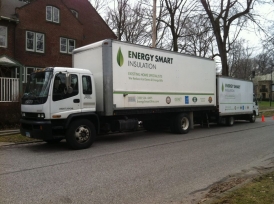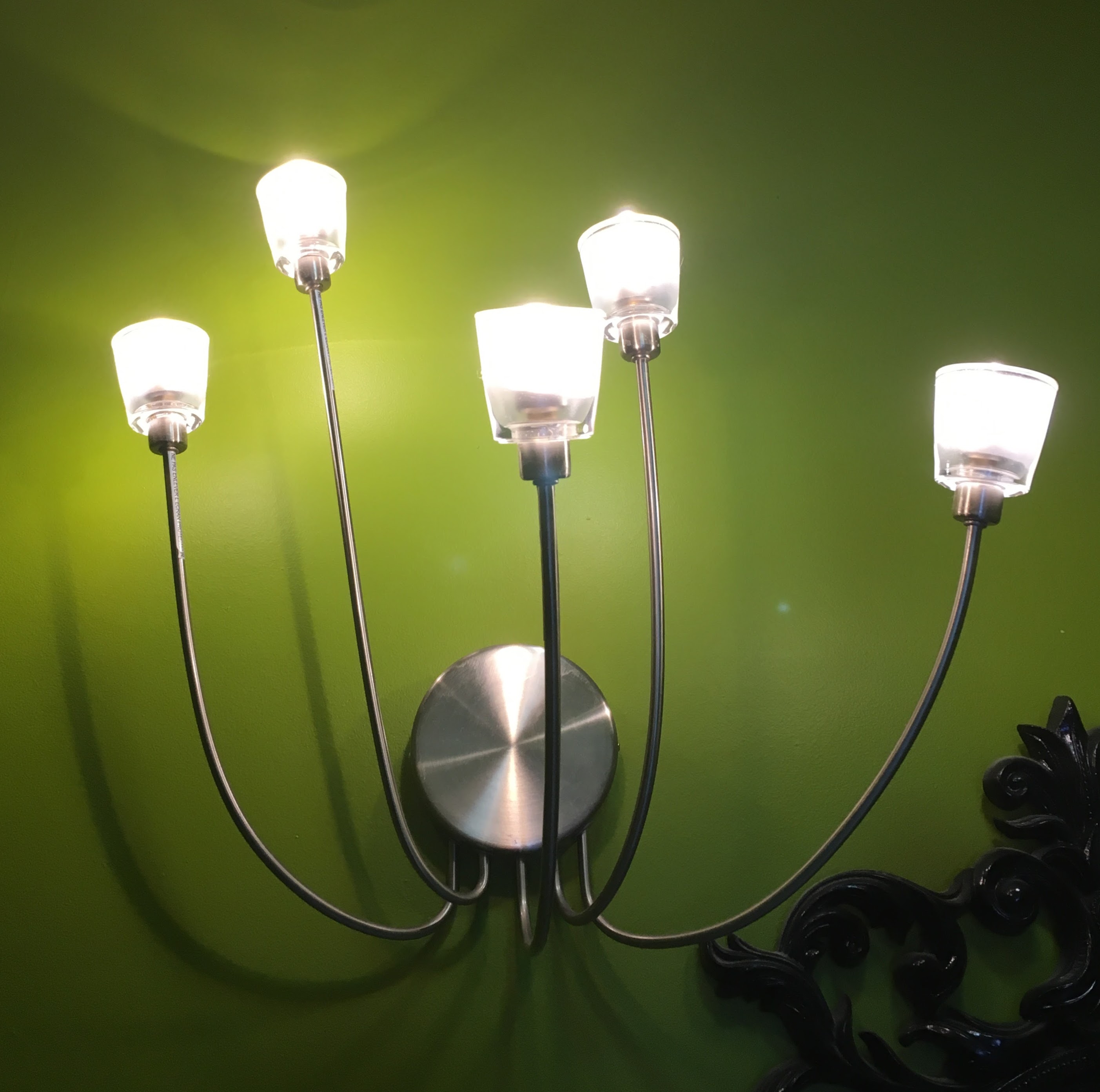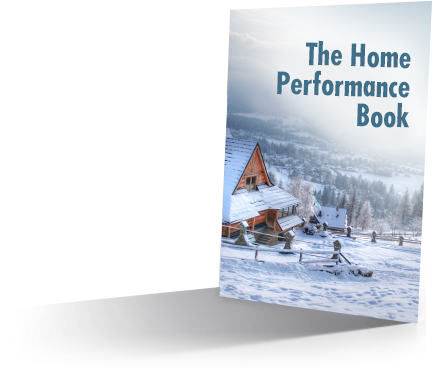No discussion would be complete without it, but it contains absolutely no substance. - Bill Rose, author of Moisture in Buildings
Founder’s Note: Everything We Thought We Knew Is Wrong – Dispelling the myth that more attic ventilation is the cure all.
This page receives a ton of hits. Over the past several years, we’ve realized that much of the ‘standard’ thinking in it is wrong:
- Attic ventilation is not likely to reduce your air conditioning bills.
- Attic ventilation probably won’t extend roof life.
- Attic ventilation may not fix icicle problems.
These are complete reversals from old thinking. We’ll dispel some myths shortly, but if you think that attic ventilation is the primary solution to any problem you have, you’re likely going to be disappointed.
Got a cold? Ventilate the attic. Car has a flat tire? Must not have enough attic ventilation. Seriously, people seem to think attic ventilation is some cure all poultice. Usually attic ventilation is little more than an attempt to treat symptoms of problems that are often easier to fix than treat!
If you ‘fix’ the house from a Home Performance standpoint, bringing the system of systems of your home into balance, it makes the wives tale that you need lots of attic ventilation an irrelevance. This tiny slice of your home’s performance gets blown out of proportion to have far more importance than it actually does. Download the free Home Performance 101 chapter to learn more about how your home actually functions.
Enough Preamble: Different Types of Attic Ventilation
Your home likely won’t have all of these, this illustrates all the possibilities. Power fans are now frowned upon, more on that later. Now that you see what it looks like, let’s discuss what attic ventilation actually does, and what it doesn’t do.
Heating Season: Two Primary Purposes of Attic Ventilation – Removing Moisture and Ice Dam Prevention.
As outdoor temperature drops we add heat and add moisture to our homes. Sometimes the problem of adding moisture is apparent – it takes the form of condensation on our windows. How does this moisture get on our windows? It is carried there by air. But what about those surfaces we can’t see?
In the winter, your home acts like a giant smoke stack: cold air comes in through the basement and rises through the house into the attic. Here is what that looks like:
If there are holes between the house and attic, stack pressure will drive moisture laden air through those holes into the attic. Moisture in the attic is drawn to cold surfaces just as it’s drawn to your windows. When those surfaces get wet, they rot and mold ensues. The “theory” behind attic ventilation is to give that moisture a place to escape before it causes mold, mildew, rot, or other problems.
The problem with this design is it is wishful thinking. Having attic ventilation doesn’t ensure the moisture gets ventilated away before it condenses on your expensive roof and wall surfaces. In some cases it simply allows MORE warm moist air from the house to deliver it’s moisture to those cold surfaces as that air leaves the house.
The question that may be occurring to some of you now is “If this moisture is coming from the house, why spend money ventilating the attic? Wouldn’t the money be better spent stopping valuable moisture and heat from GETTING to the attic in the first place?”
Once that question is out of the bag you can never get it back in. Once you see the logic, you simply can’t “un-see” it.
Want to find out if you have a problem? Get a monitor, here is one clients have liked:
Put one monitor in the attic, another outdoors in a protected place like a porch, and the others throughout your home. If the attic temp or humidity is higher than outdoors, you have a problem. There are additional options in the diagnostics section of our store.
Cooling Season
There is a third reason people think they need attic ventilation – to help keep the attic cool. Studies show ventilation that meets standards (probably more than most people have) reduces peak attic temperatures by less than 10 degrees and changing from dark roof color to light color can have 6-7 times greater impact.
Remember that stack driven air leakage into the attic in the heating season? In the cooling season stack effect reverses. Any leaks between your home and your attic push superheated attic air down into the house. Here is what that looks like:
The question that may be occurring to some of you now is “If ventilation only cools the air a tiny bit, and my attic ceiling is insulated anyway, why why do I want to spend money ventilating the attic? Wouldn’t the money be better spent stopping that superheated AIR from leaking from the attic in my house?”
Once you see the logic, you simply can’t “un-see” it.
The problem isn’t “not enough” attic ventilation, the solution isn’t “more” attic ventilation. The problem is air leaks between your house and your attic.
STOP THE AIR LEAKS – Things get a WHOLE lot better, winter and summer.
There are other really important health and safety reasons it is a good idea to stop these air leaks, if you are interested in those check out the links below. I’ve also got some pictures showing how we fix these problems. If you want to get into the weeds, there is more below about the difference between venting older and newer homes, why attic fans suck (literally), how attic ventilation has little effect on the life of your roof, and more.
What to do now.
If you are sure we are the company to help you solve your problems, great!
Fill out this questionnaire and let’s get started.
If not, please keep reading. We like educated clients.
Further Reading from Energy Smart
Mold and Moisture Page – This is inextricably linked to attic ventilation in homes with poor performance. Check out more here.
Humidity and Its Effects – Too much humidity can cause mold and many other problems. Low humidity dries out your skin and can make flu viruses thrive. Humidity is very important to control. Here is our page on the effects and the cures.
Indoor Air Quality – High moisture and humidity levels are strong drivers of poor indoor air quality. Did you know indoor air is typically 2-5 times more polluted than outdoor air? It is. Find out how and what the effects are here.
Resources:
Below are some of the best sites to do your research on and where we learn a lot, too. Check the dates, Building Science moves. If it’s more than a few years old, see if there is another article on it that says something different and is newer. Incidentally, Nate’s work has been published on Energy Vanguard and Green Building Advisor.
GreenBuildingAdvisor.com (GBA)
Attic Ventilation – Jeff Gordon – Presentation at ACI National 2011 – This is a great overview of the science (or lack thereof) behind attic ventilation, and also dispels the same myths we just did.
All About Attic Ventilation – Martin Halladay of GBA – Martin is a key expert in the Building Science world.
Understanding Attic Ventilation BSD-102 Joe Lstiburek – Joe popularized the term Building Science. He specializes in analyzing building failures. Dr. Joe is the man.
Insulated Rooflines and Shingle Temperatures, Allison Bailes on GBA – Allison runs the excellent Energy Vanguard blog which has tons and tons of very accessible articles on it.
Lstiburek’s Rules for Venting Roofs – GBA – A nice video for those who like them.
Florida Solar Energy Center Paper on Attic Ventilation – Danny Parker – go to page 24 for shingle temp discussion. Danny is a geek’s geek. He digs until he finds real answers.
Still here?
There are a few counterintuitive things to know about attic ventilation. Let’s touch on some and then dig deeper.
1. Attic ventilation only does an OK job of removing moisture in the attic. It’s far better to reduce the amount of moisture getting there from the house.
2. Attic ventilation is more important in newer homes than it is in older homes.
3. Power fans in your attic will NOT make your house cooler, and can cause a lot of problems.
4. Attic ventilation does NOT have a substantial effect on the life of your roof, perhaps one or two years. Color of the shingles and orientation have a larger effect on it’s life.
5. Attic ventilation does not cool your attic substantially, nor does attic temperature really matter if the house is ‘fixed’ from a Home Performance standpoint.
You may notice a theme here: attic ventilation gets blamed for a lot of problems that often are not caused by ventilation, but rather deeper issues. Energy Smart specializes in diagnosing and solving those deeper issues. Let’s dig in.
1. Attic ventilation only does an OK job removing moisture. It’s best to reduce how much gets there in the first place.
The most dangerous source of moisture in your attic is from the home. If a bath fan dumps into the attic, that is very warm, very moist air entering a cold space. Or if there are lots of holes between the house and the attic, warm moist air can rise into the attic from the house. Cold air doesn’t hold as much moisture, so it condenses on the roof deck. This is fine until the temperature gets over 40 and mold begins to take hold.
Rather than spend $2-5K remediating mold, if you solve the moisture source, you stop the moisture source, the only cause of mold we can control. The other two are a food source and a temperature between 40 and 100. This can be done by air sealing the attic. At this point, the mold may disappear on its own. If you don’t solve the root cause, though, you’ll be spending that $2-5K again in 5-10 years. And living in an uncomfortable energy hog of a house, because air leakage is one the biggest drivers of not only moisture problems, but also comfort and energy use. Which would you rather do?
Even well ventilated attics can have moisture problems. When there are rapid changes in temperature, moisture may condense inside of an attic, not unlike the morning dew on your lawn. Look in your attic, if the nails sticking through the roof are rusty, you have a moisture problem. The nails are the coldest points in the attic, they transfer the cool from outside, so moisture condenses on them first. If this happens a lot, they rust. If the house is air sealed well, this is not likely to cause real moisture problems that lead to ugly things, though.
2. Old vs. New
New homes use new wood, which is often processed like plywood or OSB. Mold needs 3 things to grow – a temperature between 40 and 100 degrees Fahrenheit, moisture, and a food source. Most homes don’t control attic moisture well (although homes with Comprehensive Home Performance upgrades usually do), so mold has food and moisture. If the temperature is right, mold and other organisms can grow. Processed forms of wood have a lot of low density pulp in them, which is food for mold. Because of this, newer homes built since 1950 or so have mold problems much more often than older ones.
Older homes use old, heavy wood that has lots of sap in it. Mold doesn’t like sap. Hence older homes have fewer issues with mold. They are also poorly insulated, so the heat inside the house pushes outwards and dries the materials, where newer construction lets materials stay wet because the heat doesn’t transfer as quickly. Click here to learn more about mold and moisture in homes.
If the attic of a home is well air sealed, meaning very little air from the house escapes into the attic, the home is no longer a moisture source (warm air in winter has moisture in it.) So the only moisture is coming from the outdoors. As temperature and humidity varies from day to night and from one day to the next, extra moisture in both liquid and vapor forms can end up in the attic. The job of ventilation is to let that out. After asking a lot of questions and doing a lot of reading, that is the conclusion we have arrived at.
3. ‘Don’t Let Your Attic Suck’ or Why Powered Attic Fans Are a Bad Idea
To borrow a line from Allison Bailes of Energy Vanguard, another person who writes good stuff, ‘Don’t Let Your Attic Suck.’
Through the years, we’ve seen a lot of people convinced that by cooling down their attic, their house will stay cooler in the summer. Not true, unfortunately.
Let’s look at it a different way. If you thought the walls of your house were too warm, would you put a fan on them on the outside to cool them down? Probably not. It’s better to be sure that the wall is well insulated and air sealed, then if it gets warm the warmth doesn’t transfer quickly inside. The same applies to attics.
If your upstairs is hot, there is a problem with the air sealing, insulation, or air conditioning equipment – not attic ventilation. An attic fan is not going to cool your upstairs. Attic fans actually cost you in several ways:
a. Power to Run – Powered attic fans use electricity. Solar fans don’t, but see #3.
b. Cool the Attic – If your attic is leaky, the fan will pull cooled air out of the house and into the attic. That’s cool air you paid for, pulled out by a fan you’re paying to run.
c. Potential Moisture Issues – If the fan runs in the winter when the sun is on the roof, it can pull heated air into the attic, which contains more moisture. This is likely to condense on the roof deck, getting it wet and potentially leading to mold later. We’ve seen a lot of this in split level homes, which typically have one chase with lots of air leakage. Fixing mold is not cheap.
d. Carbon Monoxide Problems – In the summer your hot water heater, if you have a gas one, doesn’t get a lot of pull up the chimney. So when your attic fan kicks on in your leaky house, it could pull air down the chimney to supply the attic fan with exhaust air it is sucking from inside the house. When the hot water heater is running, this is likely to backdraft it and pull carbon monoxide and other combustion gases into the home. Does this happen all the time? Absolutely not, but it is a risk, and more common than you would think.
As an aside, Georgia outlawed attic fans in 2011.
So if you are trying to fix a hot upstairs in summer, consider an energy audit first before forking over money for something that is not likely to work. An energy audit is a comprehensive look through your home to find the sources of your problems, like an attic that leaks air into the house or an air conditioner that is too big. This is much more likely to solve the comfort problem you are working on. Our first step is an initial consultation, if you have interest, click here, but only if you are sure that we are the one for you. If not, keep reading.
4. Attic Ventilation Does NOT Have a Substantial Effect on the Life of Your Roof
a. Shingle Warranties – If ventilation were that critical, roof warranties would vary from climate zone to climate zone, and from state to state. Cleveland gets a lot less sun and has a lot fewer warm days than Miami, but the roof warranties are the same. As Joe Lstiburek of Building Science Corporation says, roof color and orientation (North/South/East/West) both have a larger effect on roof life than ventilation.
b. Attic Temperature – Vented vs. Unvented – An unvented attic is typically one that is spray foamed, but some older homes have no ventilation at all. You would think that this would lead to substantially higher attic temperatures. It doesn’t.
The Florida Solar Energy Center did a study of vented vs. unvented attics, and found that they only had a difference of about 9 degrees. When it’s 150 degrees in an attic, 9 degrees doesn’t matter much.
c. Number of Layers – According to several experts in the Building Science group on Linked In 1, they have seen that when there are multiple layers of shingles, the shingles curl, or fail, more often. They hypothesized that the differences in moisture and the large thermal mass (shingles are heavy, and so have a lot of thermal mass) caused enough growing and shrinking that the shingles failed more quickly than if there had only been one layer of shingles. Older shingles also tend to curl. According to that, it makes sense to pay extra to have the old shingles removed when you reroof. It seemed there was a consensus that ventilation had little to do with roofs curling.
5. Attic ventilation does not cool your attic substantially, nor does attic temperature really matter if the house is ‘fixed’ from a Home Performance standpoint.
As the Florida study found, attic ventilation only made about a 10 degree difference to attic temperature, maximum. If a home is well insulated and air sealed, high temperatures don’t really matter. It’s just like dressing to go out in Antarctica – if you have the right clothes, you don’t feel the cold (or heat). Fix the house, and attic ventilation becomes substantially less important.
An example of how things change: In this article Joe Lstiburek of Building Science Corp. said don’t dense pack cathedral ceilings. Now he is trying to make it code, he had a session on it at ACI, our industry trade show in Denver in 2013. Cathedral ceilings need a place at the top of the roof to vent the moisture. He told me he hasn’t seen a failure in a Cape Cod home with dense packed sloped ceilings, and he’s spent a lot of time in Cleveland examining failures. Building Science really is a science, it continuously evolves as hypotheses are tested and challenged with real world data.
End Note
1 We started a discussion there about why shingles curl on the Linked In Building Science group, and these answers came out of it. It’s a closed group unless you’re in the field, or we would link to it.











